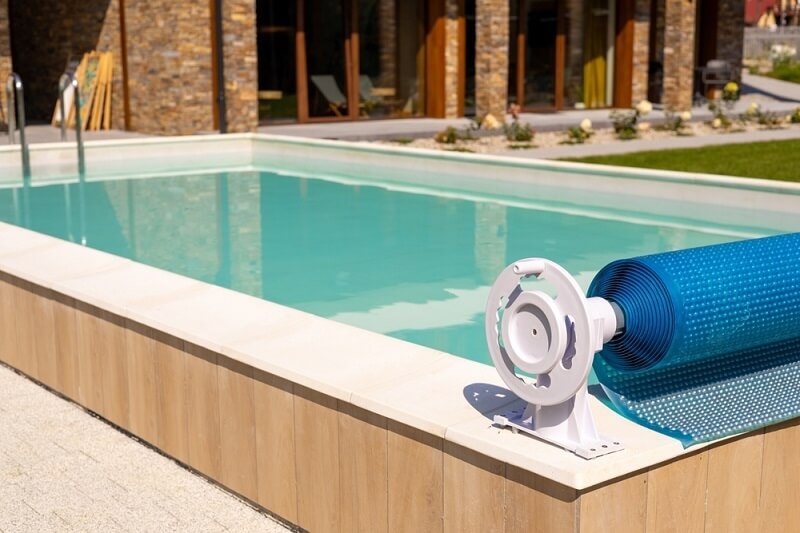Uncovering the Truth: Does Home Insurance Cover Mold?
Uncovering the Truth: Does Home Insurance Cover Mold?


Image Source: Ramsey Solutions
Mold growth in homes is a common issue that can lead to severe health problems and significant property damage. Mold thrives in damp, humid environments, often resulting from water leaks, flooding, or poor ventilation. Homeowners insurance can be a lifeline for many home-related issues, but the coverage can be complex and nuanced when it comes to mold. Let's get into home insurance and mold coverage specifics, including when mold is covered and not supplemental options, filing claims, and more.
Some Scenarios Where Mold Damage Might Be Covered
Home insurance policies typically cover mold damage if it results from a covered peril. Covered perils usually include sudden and accidental events such as water damage from a burst pipe, a malfunctioning appliance, or a roof leak caused by a storm. In such cases, the policy may cover the cost of mold removal and repairs to the affected area. Here are some scenarios where mold damage might be covered:
- Burst Pipes: If a pipe suddenly bursts and causes water damage, leading to mold growth, the insurance policy will likely cover the mold remediation.
- Appliance Malfunction: If an appliance like a washing machine or dishwasher leaks and causes mold, it might be covered if the leak is sudden and accidental.
- Roof Leaks: Damage from a storm that causes roof leaks and subsequent mold growth can be covered.
- Extinguishing a Fire: It could be covered if mold develops due to water used to extinguish a fire.
Know the Supplemental Home Insurance Options
When standard home insurance policies fail to cover mold damage, homeowners can turn to supplemental insurance options to ensure comprehensive protection. Mold endorsements or riders can be added to a standard policy, increasing coverage limits specifically for mold-related damage. Additionally, flood insurance is crucial for homeowners in flood-prone areas, as mold resulting from flooding is typically not covered by standard policies.
Another valuable option is sewer backup coverage, which helps cover mold damage from sewer backups. These supplemental options provide targeted coverage, offering peace of mind and financial protection against mold-related issues that standard home insurance may not address. By investing in these additional coverages, homeowners can better safeguard their properties from the extensive damage and health risks associated with mold growth.
Scenarios Where Mold Damage Will Not Be Covered

Image Source: Avner Gat, Inc
There are several scenarios where home insurance will not cover mold damage. Understanding these exclusions is crucial for homeowners:
Negligence
Mold caused by long-term neglect or lack of maintenance is not covered. For example, the insurance company will likely deny the claim if a homeowner fails to repair a persistent leak or address high humidity levels, resulting in mold growth.
Flooding
As mentioned earlier, standard home insurance policies do not cover mold from flooding. Separate flood insurance is required for such events.
Pre-existing Conditions
Mold issues that existed before the policy was purchased should be covered. Addressing any mold problems before obtaining insurance is essential.
High Humidity
Mold resulting from high humidity or condensation is typically not covered, as it is preventable through proper ventilation and dehumidification.
Are you considering filing a mold claim?
Deciding whether to file a mold claim involves several considerations:
Cost of Damage
Assess the extent of the mold damage and the cost of remediation. If the price is significantly higher than your deductible, it might be worth filing a claim.
Impact on Premiums
Filing a claim can increase premiums, so it is essential to carefully evaluate whether the financial benefit of the claim outweighs the potential rise in long-term home insurance costs before proceeding.
Policy Limits
Be sure to review your policy for any mold coverage limits thoroughly. If you find that the potential payout is minimal, filing a claim might not be worth the effort and potential premium increase.
Steps to File A Homeowner Insurance Claim For Mold

Image Source: YouTube
Filing a homeowner insurance claim for mold involves several detailed steps to ensure a smooth and successful process. Here's a comprehensive guide:
1. Document the Damage
Start by thoroughly documenting the mold damage. Take clear, detailed photos and videos of all affected areas. This visual evidence will be crucial in supporting your claim. Ensure that any water damage or other related issues that might have contributed to the mold growth are captured.
2. Contact Your Insurance Company
Notify your insurance company as soon as you discover the mold. Prompt reporting is essential, as delays can lead to further damage and complications with your claim. Provide your insurance representative with all necessary information, including when and how you discovered the mold. Be prepared to answer questions about any prior issues that might have led to the mold problem.
3. Prevent Further Damage
Take immediate steps to prevent the mold from spreading. This may include stopping the source of water intrusion, drying out the area, and beginning preliminary cleanup efforts. While mitigating further damage is important, avoid making significant repairs until after the insurance adjuster has inspected the damage.
4. Hire a Professional
Engage a professional mold remediation company to assess the extent of the damage and provide an estimate for remediation costs. Your insurance company might also send an adjuster to inspect the damage. Professional assessments can offer a more accurate understanding of the remediation needed and associated costs.
5. Submit a Claim
Complete and submit the required claim forms provided by your insurance company. Ensure all information is accurate, comprehensive, and supported by the earlier documentation and estimates. Include a detailed description of the damage and the steps you've taken to prevent further issues.
6. Follow Up
Maintain regular communication with your insurance company to track the progress of your claim. Be responsive to any additional requests for information or documentation. Keeping a record of all interactions and communications can be helpful if disputes arise.
Options You Have If Your Claim is Denied
If your mold claim is denied, you have several options to pursue. First, review the denial to understand the specific reasons. Ensure that all necessary documentation and evidence are provided. If information needs to be included, supply the additional details to support your claim. Consider appealing the decision through your insurance companys formal appeal process.
Hiring a public adjuster or attorney specializing in insurance claims can also be beneficial. They can negotiate with the insurance company on your behalf and help reverse the denial. Persistent and informed action can potentially turn a denied claim into an approved one.
Common Signs Of Mold Growth
Identifying mold growth early can prevent extensive damage and health issues. Here are some common signs:
- Musty Odor: A persistent musty smell is often one of the first indicators of mold.
- Visible Mold: Mold can appear as black, green, white, or brown spots on walls, ceilings, floors, or other surfaces.
- Water Damage: Signs of water damage, such as stains, peeling paint, or warped materials, can indicate mold growth.
- Health Symptoms: Unexplained health symptoms such as coughing, sneezing, eye irritation, or respiratory issues might suggest mold presence.
- Condensation: Persistent condensation on windows, pipes, or walls can create an environment conducive to mold growth.
Tips to Prevent Mold Growth
Preventing mold growth is crucial for maintaining a healthy home environment and avoiding costly damage. Here are some essential tips to help keep your home mold-free:
1. Control Humidity Levels
Keep indoor humidity below 60%. Use dehumidifiers and air conditioners to manage humidity, especially in damp areas like basements and bathrooms. Regularly empty and clean dehumidifiers to ensure they work efficiently.
2. Ensure Proper Ventilation
Proper ventilation in high-moisture areas is vital. Use exhaust fans in bathrooms, kitchens, and laundry rooms to expel excess moisture. Open windows when possible to improve air circulation.
3. Repair Leaks Promptly
Address any water leaks or spills immediately. Fix leaking pipes, roofs, and windows as soon as they are discovered to prevent water from seeping into walls and floors, where mold can thrive.
4. Dry Wet Areas Quickly
After any water spill or flooding, dry the area within 24 to 48 hours. Remove water-damaged carpets, rugs, and furniture to prevent mold growth.
5. Clean and Maintain Gutters
Please ensure gutters and downspouts are clean and direct water away from the house. Blocked gutters can cause water to pool and seep into the foundation, promoting mold growth.
6. Use Mold-Resistant Products
When building or renovating your home, choose mold-resistant materials such as drywall, paint, and insulation. These specially designed products inhibit mold growth, offering long-term protection and contributing to a healthier living environment.
7. Monitor Indoor Plants
Overwatering indoor plants can lead to excess moisture, creating a conducive environment for mold growth. Please ensure proper drainage and avoid any water accumulation around plants to prevent mold issues.
Cost of Professional Mold Remediation and Removal
The cost of professional mold remediation varies based on several factors, including the extent of the mold growth, location, and the type of mold. On average, homeowners can expect to pay between $500 and $6,000 for mold remediation. Here are some cost considerations:
- Inspection and Testing: Mold inspection and testing can cost between $200 and $600.
- Remediation: The cost of mold remediation typically ranges from $500 to $4,000, depending on the affected area's size and severity.
- Repairs: Repairs to fix the underlying cause of mold, such as plumbing or structural repairs, can add to the overall cost.
- Extensive Infestations: Severe or widespread mold infestations, such as those affecting HVAC systems or large areas, can cost $6,000 or more to remediate.
You may also like to read Learn All About Personal Liability In Homeowners Insurance.
Conclusion
Mold growth can cause significant health and property issues, so understanding how home insurance interacts with mold damage is essential. While standard home insurance policies may cover mold in specific circumstances, such as sudden water damage from a covered peril, there are many instances where mold is not covered. Homeowners should consider supplemental insurance options and take proactive steps to prevent mold growth. Knowing how to file a mold claim and what to do if it's denied can also help manage the financial impact of mold damage. Ultimately, staying informed and vigilant can help protect your home and health from the detrimental effects of mold.
This content was created by AI



